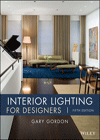Amsterdam
Ryoji Ikeda
Although widely known as a composer of electronic music, 42-year-old Japanese artist Ryoji Ikeda began working with light as a medium in the 1990s as a member of the multimedia art group Dumb Type. His previous installations include spectra (2004), a brightly illuminated walkway in Eero Saarinen’s TWA Terminal, and a corridor pulsating with strobe lights and red lasers called spectra II (2002) that has been staged in galleries and elsewhere. In these works, Ikeda challenges spectators with audiovisual stimulation: Intensely bright rooms or dead sound chambers create discomforting situations as well as a sense of infinity.
Ikeda recently continued his spectra series at this year’s Dream Amsterdam outdoor arts event in June. With four installations, including a 600-foot-high projection aimed toward the sky and a slash of light on the facade of Kisho Kurokawa’s Exhibition Wing for the Van Gogh Museum, the artist continued exploring the themes of his earlier works, but at a much greater scale.
In Amsterdam, Ikeda worked alongside Philip Rose from the London office of lighting design firm Speirs and Major Associates. “Ryoji wanted to use very intense, pure white light in a number of locations in the city,” Rose says. “People would come across them by chance. The intensity of the light would change people’s perception of these illuminated elements and provide an unforgettable experience.”
Ikeda picked the four Amsterdam sites while riding around the city on a bicycle. In Vondel Park, he and Rose installed five 2-kilowatt floodlights on the floor of the park’s ornate metal Music Pavilion to bathe the surrounding flowerbeds, pond, and trees in an intense white light.
To light Kurokawa’s Van Gogh Museum wing, Ikeda and Rose pointed five Robert Juliat projectors in the museum director’s office in the main building toward the protruding wall of the wing’s boxlike Print Room, painting it in white light. The office was “not directly opposite the illuminated wall,” Rose explains. “Therefore, we were framing the wall from an angle. The line you see on the main body of the museum is a result of framing the wall with light. This line helps define the protrusion from the main body of the museum.”
In the Westergasfabriek, a 19th-century gasworks turned into a park and cultural center by the landscape architecture firm Gustafson Porter, the designers mounted 68 narrow-beam projectors on the curved inner wall of one of the former brick gasholders. Walking around the water-filled container, visitors were attracted to its rim to discover the source of the intriguing bright light.
Across town on Java Island—a residential neighborhood in the east docklands master-planned by Dutch architect Sjoerd Soeters in the 1990s—Ikeda set up his largest installation on a 2.5-acre field at the western tip of the island. Arranged in a 5-by-5 grid, 25 narrow-beam projectors illuminated the night sky in a flamelike configuration.
Throughout his artistic career, Ikeda has approached his work like a meticulous watchmaker, carefully controlling all of the visual and aural aspects of his ultraminimalist creations. “I really love to control sound and light—precision is a keyword for me,” he says. He has been able to do that in galleries, but working outdoors meant that color temperature and brightness were affected by weather, air pollution, hardware limitations, and budget restrictions. In combination with Ikeda’s decision to forego his usual audio accompaniment, the results in Amsterdam were less immersive than his previous interior installations.
And yet Ikeda said he had planned not to influence people’s aesthetic response: “If the people don’t hear anything from the artist, they have infinite possibilities to feel, think, experience the installations on their own.” Indeed, by not confounding his viewers with vast, dimensionless space, spectra asked them to reconsider the city beneath their feet. As Amsterdam prepares to build new parks and other amenities to accommodate notable population growth—70,000 units of housing will be constructed over the next 30 years—Ikeda’s interventions inject an intriguing artistic sensibility into spaces that may have succumbed to overuse, and underscore the importance of public space in Amsterdam’s continuing evolution.




